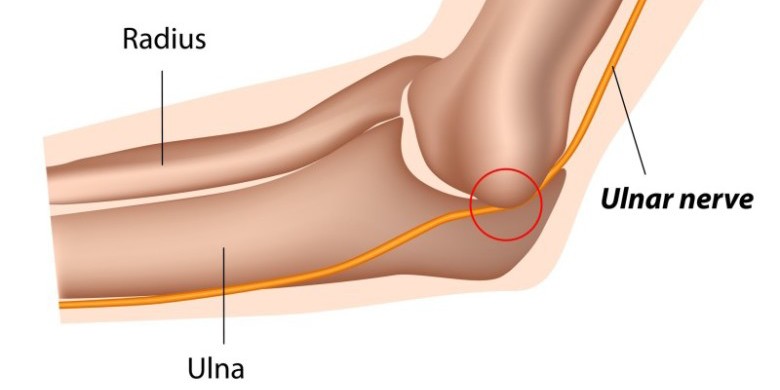Ulnar Nerve Root Compression Symptoms & Treatments
Category: Nerves | Author: Stefano Sinicropi

You might not be very familiar with your ulnar nerve, but if you’ve ever felt that tingling sensation that occurs when you strike your funny bone, you’ve already become acquainted with the nerve! Interestingly, the ulnar nerve is the largest nerve in the body that has an unprotected spot, which is in your elbow. The nerve runs between your skin and the bone near your elbow, leaving it susceptible to contact.
Funny bone injuries aside, your ulnar nerve plays a crucial role in moving your extremities, and problems can occur if the nerve becomes damaged or compressed. Today, we take a look at some of the symptoms and treatment options for ulnar nerve compression.
Symptoms of Ulnar Nerve Compression
Your ulnar nerve roots branch off the spinal cord between the C7 and T1 vertebrae of the cervical and thoracic areas of your spine. The nerves extend through openings in the vertebrae called foramina and then extend through your arms to your fingertips. Because the ulnar nerve runs so closely near a lot of other spinal components, like your vertebrae and spinal discs, compression isn’t all that uncommon. When ulnar nerve damage or compression occurs, a person may experience:
- Back pain
- Weakness in your back, shoulders or hands
- Tingling or shooting sensations in your hands
- Numbness
- Tenderness in your elbow joint
Ulnar nerve compression can occur for a number of reasons, but as we noted above, due to its relation to other spinal components, changes to the spine can lead to ulnar nerve compression. Some of the more common spine conditions that lead to ulnar compression include herniated or damaged discs, spinal stenosis, facet disease, osteoarthritis, acute injury or normal aging.
Ulnar Nerve Compression Treatment
If you believe you are dealing with a compressed ulnar nerve, visit a spine specialist for a diagnostic exam. A physical exam combined with an electrodiagnostic study of your nerves can help pinpoint the condition. Should the specialist uncover an issue with the nerve, he or she may recommend any of the following treatment options.
- Physical/Occupational Therapy – PT/OT can help strengthen the ligaments and tendons and free up the compressed nerve.
- NSAIDs – Anti-inflammatory medications can help reduce pain and regionalized inflammation.
- Exercise – Similar to physical therapy, low-impact exercises can strengthen and decompress the affected area.
- Nerve Decompression Surgery – If physical therapy and conservative treatments fail, a minimally invasive decompression surgery may be your best option. Your doctor will discuss the specifics of the operation based on where the compression occurs and what is putting pressure on the nerve.